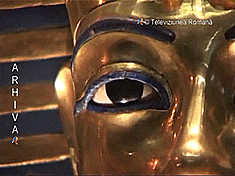ABSTRACT
The existence of ruined towns in interior Somalia, most of them in the northwest, has been known to Western observers since 1854. Some were briefly surveyed during the last century. Although new investigations have been undertaken recently in northwest Somalia and on the neighbouring Somali plateau of eastern Ethiopia, northeastern Somalia has mostly remained unexplored. However, several ruined towns, three of them relatively large, have recently been discovered in the Nugaal Valley. These new discoveries enhance our current limited knowledge of the history of these towns. The three larger towns are located in the same region where the first interior city in Somalia was reported in 1154. It is possible that one of the newly reported sites represents that forgotten city. This paper presents preliminary data from a surface investigation of the three sites and then explores their ramifications for the history of the region.

 www.researchgate.net
www.researchgate.net
Anyone know how to get access to the article?
The existence of ruined towns in interior Somalia, most of them in the northwest, has been known to Western observers since 1854. Some were briefly surveyed during the last century. Although new investigations have been undertaken recently in northwest Somalia and on the neighbouring Somali plateau of eastern Ethiopia, northeastern Somalia has mostly remained unexplored. However, several ruined towns, three of them relatively large, have recently been discovered in the Nugaal Valley. These new discoveries enhance our current limited knowledge of the history of these towns. The three larger towns are located in the same region where the first interior city in Somalia was reported in 1154. It is possible that one of the newly reported sites represents that forgotten city. This paper presents preliminary data from a surface investigation of the three sites and then explores their ramifications for the history of the region.

Ruined towns in Nugaal: a forgotten medieval civilisation in interior Somalia
Download Citation | Ruined towns in Nugaal: a forgotten medieval civilisation in interior Somalia | The existence of ruined towns in interior Somalia, most of them in the northwest, has been known to Western observers since 1854. Some were... | Find, read and cite all the research you need on...
Anyone know how to get access to the article?



